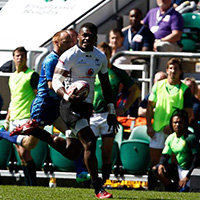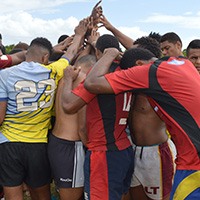Leading players, coaches and referees help develop new breakdown education resource
World Rugby has collaborated with some of the biggest names in international rugby to launch an educational resource to support the practical implementation of the breakdown law application guideline announced in April.
With the objective of making the one of the game’s most dynamic and difficult facets simpler to play, coach and officiate, the resource has been developed with the input of leading coaches Joe Schmidt, Ian Foster, Richie Gray and Russell Earnshaw, International Rugby Players representatives Josh Beaumont and Victor Vito and international referees Wayne Barnes and Jaco Peyper.
Available via https://laws.worldrugby.org/en/guidelines/15/detail, the resource provides step-by-step guidance for one of the most dynamic and complex areas of the game outlining guidance for the tackler, the ball carrier, the first arriving player (jackler), other arriving players and dealing with foul play.
The key focus areas are:
- Tacklers will be expected to release the ball carrier and roll away immediately in the direction of the touchline
- Ball carriers will be allowed one dynamic movement after being tackled with an onus on presenting or releasing the ball more quickly
- Stand-up tackle: Ball carrier will be given time to get to ground. A tackle will be called when the ball carrier clearly gets a knee to the ground. A maul will be called when defenders stop the momentum of the ball carrier and successfully hold him/her up. Maul side entry and collapse will be strictly refereed
- Jackler: First arriving player must enter legally, be on their feet and on the ball, with an attempt to lift it. Likely to be rewarded more quickly
- Other arriving players: Side entry will be refereed. ‘L’ angle entry (see guidance) expectation with players required to ‘drive not dive’
- Foul play will continue to be a priority in the interests of player safety
All unions have received the guidance and New Zealand’s Super Rugby Aotearoa, which kicks off on Saturday, will be the first competition to implement the World Rugby law application guideline.
International referee Wayne Barnes said: “We are not changing the laws of the game, but we are aligned in our mission to stricter enforcement of key areas to create faster, attacking ball and a fairer contest.”
Leading defence coach Richie Gray added: “This resource has been developed by those who are involved in the game on a daily basis. It is designed to assist coaches, players and referees with alignment that the breakdown is coached in the spirit of the laws, is played in a positive and accurate manner, and refereed consistently across competitions and at all levels.”
International Rugby Players representative and England international Josh Beaumont added: “There are so many different moving parts at the breakdown. When we were discussing the area with the players, it was very apparent that it was not a law issue, but an issue of alignment and clarity for players and coaches.
“This educational resource will play a strong role in aligning the officiating approach, aligning coaches and players in the approach to the breakdown both in terms of player welfare and reducing penalties, but I also believe that it will improve the overall quality of the product for everyone.”
Resource co-author, breakdown specialist and former Scotland and South Africa coach Richie Gray said: “As I coach, I believe that we have to invest the time to coach the breakdown better. In turn, this should make it easier for the referee who has to make split-second decisions.
“This project has been a real team effort across the coaching, playing and refereeing fraternity to achieve clarity on what we expect from the ball carrier, the first arriving player (or jackler), the angle of entry for other arriving players and so on in order that we build a consistent picture for referees on the field and for coaches to coach their players effectively.”
World Rugby Chairman Sir Bill Beaumont concluded: “The breakdown is the most dynamic facet of the game and was increasingly difficult for a player, coach and match official, while being responsible for nine per cent of match injuries at the elite level.
“We therefore set out to identify ways to reduce the risk of injury, while promoting a fair contest for the ball and enhancing the experience for all. As announced in April the specialist Law Review Group felt that the most practical approach was to reinforce existing law, rather than law change.
“The educational guidance is an exceptional piece of work. I would like to thank all involved and look forward to seeing it in action in the Super Rugby Aotearoa in New Zealand this weekend.”
World Rugby is educating its international referee panel on the change in emphasis and collaborating with international teams and unions to ensure alignment and understanding.






